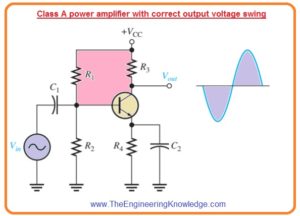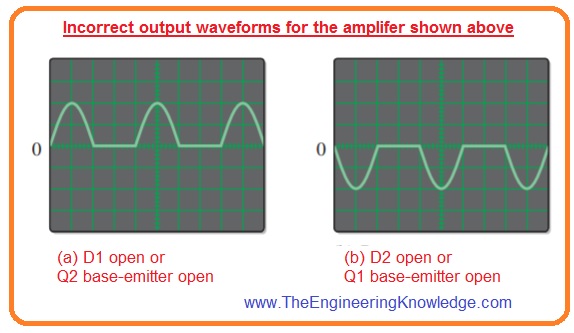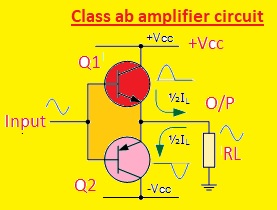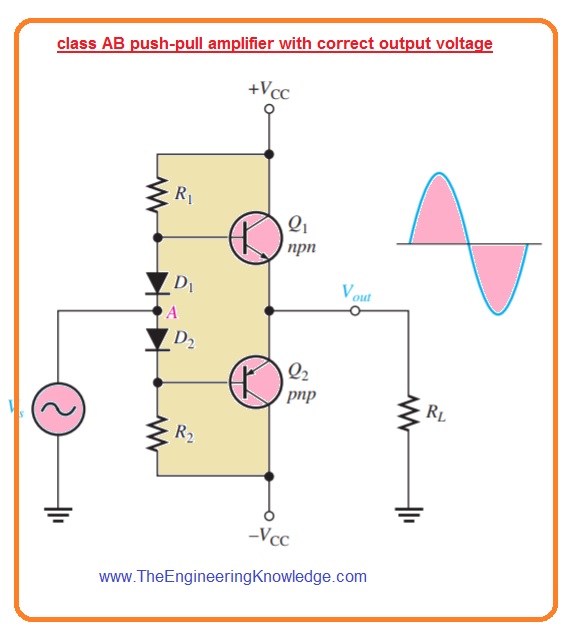 Hello friends, I hope you all are doing great. In today’s tutorial, we will have a look at How to Troubleshoot Power Amplifiers. Troubleshooting is the process to solve the problem is used to repair damage to different instruments, machines or circuits. In the previous tutorial, we discussed different amplifiers such as class A, Class B, and Class C power amplifiers.
Hello friends, I hope you all are doing great. In today’s tutorial, we will have a look at How to Troubleshoot Power Amplifiers. Troubleshooting is the process to solve the problem is used to repair damage to different instruments, machines or circuits. In the previous tutorial, we discussed different amplifiers such as class A, Class B, and Class C power amplifiers.
In today’s post, we will have a detailed look at the troubleshooting and repair of power amplifiers. We will perform troubleshooting for class A and class AB amplifiers. So let’s get started with How to Troubleshoot Power Amplifiers.
Table of Content
- What is Class AB Amplifier: Working & Its Applications
- What is Class AB Amplifier?
- Working of Class AB Amplifier?
- Class AB Amplifier Applications?
- Class ab amplifier circuit
- How to Troubleshoot Power Amplifiers
- Class A Amplifier Troubleshooting
- Class AB Troubleshooting
What is Class AB Amplifier: Working & Its Applications
What is Class AB Amplifier?
- The Class AB amplifier comes with both types of the amplifier features Class A and Class B amplifiers. It is used in audio circuits for example the sound signal of a microphone or music player is amplified with this amplifier.
- This amplifier uses class A and Class B stages for the reduction of distortion and enhances power efficiency. The operation of the Class A stage is a linear mode, so amplify the signal with less distortion but lose the high power also in case when no input is connected.
- While the Class B stage of the AB amplifier does the signal amplification when the signal is larger than a certain value of the threshold, decreasing the power consumption but causing the crossover distortion
- In the case of the Class AB amplifier biased of the Class, A stage is less than the peak output value of the input signal, therefore it can handle low-value signals, whereas the Class B stage operates for high-level signals. Through this process, this amplifier produces a high-quality sound signal with less distortion and high power efficiency
Working of Class AB Amplifier?
- The working principle of the Class AB amplifier consists of Class A and Class B amplifier features to get the required low distortion and high power efficiency.
- A Class A stage and a Class B stage make up the two major stages of a Class AB amplifier. Even when there is no input signal, the Class A stage uses a lot of power since it runs in a linear zone and amplifies the input signal with little distortion. The Class B stage, on the other hand, minimizes power consumption but introduces crossover distortion since it only amplifies the input signal when it is above a specified threshold.
- The bias of the Class A stage of a Class AB amplifier is set just slightly below the input signal’s peak output level. In other words, the Class B stage takes over for the high-level signals while the Class A stage manages the low-level signals. The Class A stage amplifies the signal when the input signal is weak, while the Class B stage is turned off. The Class B stage activates and takes over the amplification when the input signal exceeds a certain threshold, allowing the Class A stage to use less power.
- A Class AB amplifier may generate high-quality sound with little distortion while keeping great power efficiency by integrating the advantages of both Class A and Class B amplifiers. Due to this, it is a common option for audio applications including the amplification of audio signals from music players and microphones.
Class AB Amplifier Applications?
- Here some common applications of Class AB Amplifiers are explained
- Audio systems: Home theaters, audio amplifiers, and automobile audio circuit systems all frequently employ class AB amplifiers. They are appropriate for both business and home audio applications since they can offer high-quality sound with less distortion.
- Instrumentation amplifiers: Instrumentation amplifiers, which are used to precisely measure small value signals, frequently employ class AB amplifiers. These amplifiers are the best for amplifying low signals while keeping signal quality because of their minimal distortion and great power economy.
- Communication systems: In order to boost the signal before transmission, these amplifiers are also utilized in communication systems like radio and television transmitters. They are utilized in situations where maintaining signal integrity requires both great power economy and minimal distortion.
- Power amplifiers: Power amplifiers for high power output applications, such as public address systems and live sound reinforcement systems, frequently employ class AB amplifiers. They are perfect for large-scale audio applications since they have a great power economy while delivering high-quality sound.
Class ab amplifier circuit
- A Class A stage and a Class B stage make up the two major stages of a Class AB amplifier circuit. The Class B stage works in a non-linear zone, amplifying the input signal only when it is over a certain threshold, in contrast to the Class A stage, which is biased by a continuous current source to function in the linear region. Here is a basic Class AB amplifier circuit diagram:
- The input signal is applied to the base of transistor Q1 in this circuit. A continuous current source is used to bias transistor Q1 such that it operates in the Class A area. The base of transistor Q2, which runs in the Class B area, receives the signal from transistor Q1 after it has been amplified.
- Q2 remains off and the Class A stage handles the amplification when the input signal is weak. Q2 activates and takes over the amplification when the input signal amplitude rises, allowing the Class A stage to use less power.
- The load resistor RL is linked to the output signal of the amplifier, which is derived from the collector of transistor Q2. The load resistor (RL) and collector resistance (Q2) values affect the amplifier’s gain.
- By combining the advantages of Class A and Class B amplifiers, the Class AB amplifier circuit offers a balance between minimal distortion and great power efficiency. It is the best option for many audio and instrumentation applications because of this.
How to Troubleshoot Power Amplifiers
- First of all, we discuss the troubleshooting of class A amplifiers.
Class A Amplifier Troubleshooting
- The proper working-class amplifier is shown in below figure where a fine sine wave is generated when the input voltage is applied.
- Let’s take 4 faulty signal output waves which are normally occurred.
- In figure denoted as ‘a’ oscilloscope shows a dc level equal to the dc source voltage denoting that the transistor is the cutoff mode.
- The 2 main reasons for this condition are given as.
- The PN junction of the transistor is open.
- Resistance R4 of the circuit is open and stops current from the collector and emitter.
- In the figure denoted as ‘b’ the oscilloscope shows a dc signal at the collector almost equal to the voltage of the emitter.
- The main reasons for this state are given as.
- The transistor is a short circuit with transistors.
- Resistance R2 is an open circuit that caused the transistor to be in the saturation region.
- In 2nd condition, enough high input signal can cause saturation at the negative peak which causes short pulses at the output.
- In figure denoted as ‘c’ oscilloscope display that an output signal which shows that the transistor is in cutoff for a small part of the input signal.
- The 2 main reasons for this are.
- The position of Q point has changed down due to high variations in the tolerances of resistance.
- Resistance R1 is an open circuit biased transistor in the cutoff region.
- The figure denoted showed that the input wave is enough to cause a cutoff region for a small part of the signal.
- In figure denoted as d oscilloscope show an output signal which shows that the transistor is in saturation by letting a small part of the signal.
- The reasons for this are.
- Faulty value resistance has changed the position of Q-point towards saturation.
- Resistance R2 is an open circuit that causes the transistor to be in a saturation region and the input wave brought out saturation for a small part of the signal.
Class AB Troubleshooting
- In the below figure class AB push-pull amplifier is shown the output of ac signal is also shown correspondent to an ac input signal.
- The 2 faulty output signal is shown in the below figure.
- The figure denoted as show that only the positive half of the input wave is exits at the output.
- Then the first main reason is that diode Di is open. If it is an error the positive half of the input wave is forward biases the diode D2 and causes transistor Q2 to operate.
- The second possible cause is that the base-emitter junction of transistor Q2 is open so a positive half cycle of input signal exits on the output as transistor Q1 is operating.
- The waveform shown in figure b indicates that only the negative half of the wave exists at the output.
-
- The first fault for this is that diode D2 is an open circuit. If this is error negative half of the input wave forward biases diode D1 and put the half signal at the base of transistor Q1.
- The second fault is that the base-emitter junction of transistor Q1 is open due to the negative half of the input wave display at the output since transistor Q2 is operating.

So, friends, it is a detailed post about How to Troubleshoot Power Amplifiers if you have any questions about it ask in the comments. Thanks for reading.








The article is very current for what we live, and life is getting harder.
I have made a way to have a real job at home, without cheating,
maybe it will help someone.